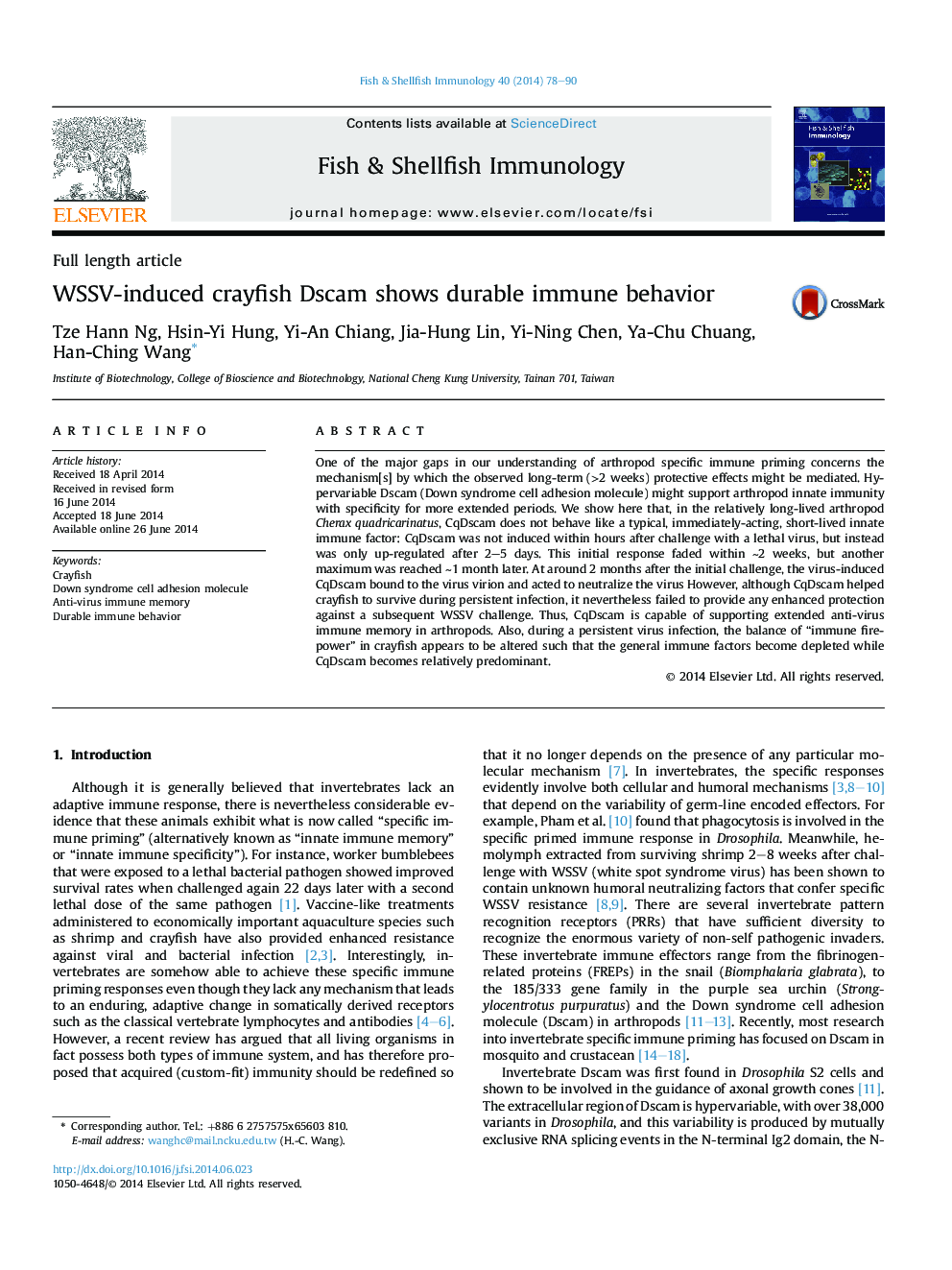| Article ID | Journal | Published Year | Pages | File Type |
|---|---|---|---|---|
| 10971924 | Fish & Shellfish Immunology | 2014 | 13 Pages |
Abstract
One of the major gaps in our understanding of arthropod specific immune priming concerns the mechanism[s] by which the observed long-term (>2 weeks) protective effects might be mediated. Hypervariable Dscam (Down syndrome cell adhesion molecule) might support arthropod innate immunity with specificity for more extended periods. We show here that, in the relatively long-lived arthropod Cherax quadricarinatus, CqDscam does not behave like a typical, immediately-acting, short-lived innate immune factor: CqDscam was not induced within hours after challenge with a lethal virus, but instead was only up-regulated after 2-5 days. This initial response faded within â¼2 weeks, but another maximum was reached â¼1 month later. At around 2 months after the initial challenge, the virus-induced CqDscam bound to the virus virion and acted to neutralize the virus However, although CqDscam helped crayfish to survive during persistent infection, it nevertheless failed to provide any enhanced protection against a subsequent WSSV challenge. Thus, CqDscam is capable of supporting extended anti-virus immune memory in arthropods. Also, during a persistent virus infection, the balance of “immune firepower” in crayfish appears to be altered such that the general immune factors become depleted while CqDscam becomes relatively predominant.
Related Topics
Life Sciences
Agricultural and Biological Sciences
Aquatic Science
Authors
Tze Hann Ng, Hsin-Yi Hung, Yi-An Chiang, Jia-Hung Lin, Yi-Ning Chen, Ya-Chu Chuang, Han-Ching Wang,
